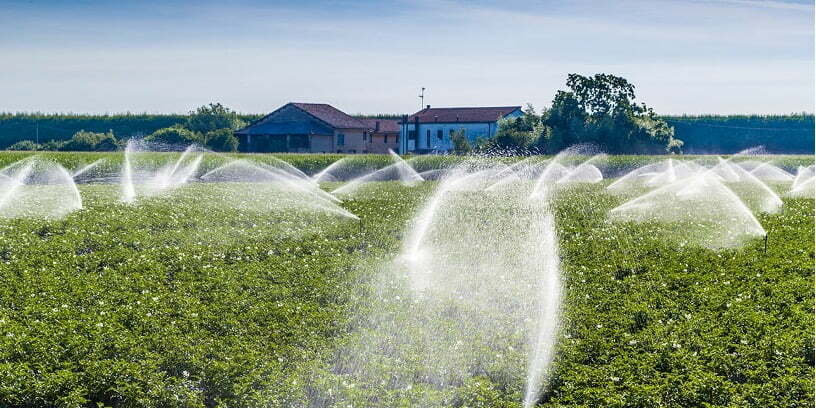
ASSESSING NEED
Irrigation is the act of artificially applying water to allow plants grow, and this can be either through manual or automatic techniques. Choosing the appropriate type of irrigation would depend on many factors, such as the crop type, climatic/weather conditions, durability, affordability, ease of use, etc.
Rainfall is the first thing to consider when considering the need for an irrigation system. For instance, farmers planning to grow only during the rainy season, particularly in southern Nigeria, might not require an irrigation system. Managing excess water from continuous rainfall could be a bigger challenge in such a situation.
However, growing in northern Nigeria, where most farm productions occur in the dry season, requires securing a reliable water source in terms of irrigation. This logic also applies to any farmer in any part of the country that wishes to take advantage of the seasonal price fluctuations by growing all year round.
IRRIGATION TYPES
We feature in this article four (4) of the most popular irrigation systems around by highlighting their advantages and disadvantages. These are:
- Drip Irrigation
- Sprinkler Irrigation
- Pivot Irrigation
- Flood Irrigation.
Drip Irrigation
This irrigation system saves water and fertilizer by allowing water to drip slowly to the roots of plants, either onto the soil surface or directly onto the root zone, through a network of valves, pipes, tubing and emitters. It is done through narrow tubes that deliver water directly to the base of the plant.
Based on our agronomic experience, drip irrigation is the best irrigation system option for disease-prone plants like tomatoes, peppers, and cucumbers.
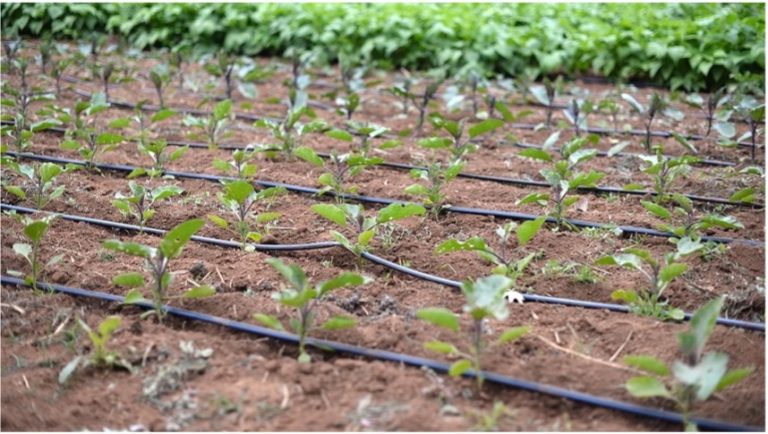
This is because the water goes directly to the roots, leaving the leaves and stems dry. Most diseases thrive best on moist and humid surfaces, a condition water easily makes possible.
We, Seedforth Agro, would generally recommend drip irrigation as the best irrigation system to grow most fruit vegetables such as tomatoes, peppers, cucumbers etc.
Pros
- Conserves Water: Almost no water is lost through surface runoff or evaporation.
- Soil particles have plenty of opportunity to absorb and hold water for plants.
- Prevents nutrient Leaching: It also means very few nutrients leach down beyond the reach of plant roots.
- Discourages Weeds: The soil surface between the plants also remains drier, discouraging weed seeds from sprouting.
Cons
- Maintenance is required to keep the system going
- Relatively more expensive
- Limits the use of tractors and machineries on the farm
- It could be complicated for inexperienced users
Sprinkler Irrigation
This is a method of irrigation that is like rainfall. Water is distributed through a system of pipes, usually by pumping. It is then sprayed into the air; irrigating the entire plants and soil surface through spray heads so that it breaks into small water drops that fall to the ground.
Sprinkler systems could be Fixed Coverage, i.e., mounted on the established frame, or Mobile Coverage that allows the location to be changed utilizing a quick dismantling system.
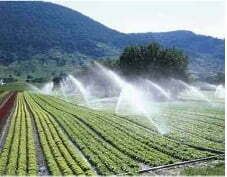
Pros
- Relatively easy to operate
- They can cover large distances of land
- They adapt to the different land type – slop, levelled etc
- They allow automating the irrigation
Cons
- It can be expensive to set up and run due to high energy consumption.
- Sprinkler irrigation is not the most efficient use of water
- Water distribution can be easily affected by intense winds and temperature
- It could make plants to be more prone to diseases and weeds to the whole plant exposed to water
Pivot irrigation
This is also called Central Pivot or Circle Irrigation. This form of irrigation uses rotating equipment around a pivot, and crops are watered with sprinklers.
Pivots are electrically propelled and deliver water and fertilizers to crops uniformly in rain form.
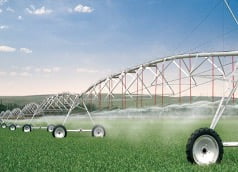
Pros
- High degree of automation, which can save labor
- Can easily be used to cover large areas of farmland
- Land levelling is not needed. Can be used on uneven and slopy lands
Cons
- Can lead to water wastage and runoffs
- High investment costs
- Evaporation losses can be high
- Maintenance costs are relatively high
Flood Irrigation
Flood irrigation is probably one of the oldest methods of irrigation. It is also known as furrow or surface irrigation; it involves water flow down small trenches running through crops. It’s basically flooding the soil with
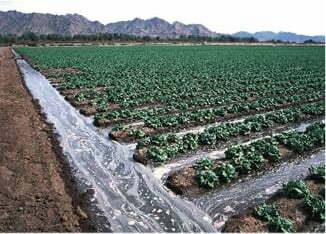
water, which flows over the ground surface and through the crops. It is still extremely popular in developing countries such as Nigeria due to its cost and low technology required.
Most agricultural communities in northern Nigeria rely solely on this type of irrigation, where water is released from dams for irrigation purposes during the dry season.
Pros
- Cheap and low tech
- Where possible, runoff water can be recycled to improve efficiency
Cons
- A least efficient form of irrigation. More water loss from evaporation, infiltration, and runoff
- Increases the chances of nutrient leaching
CONCLUSION
There are several irrigation types to choose from. The grower’s decision would most likely depend on multiple factors such as the crop being grown, the farmer’s goal, durability, operational costs, available equipment/expertise, water availability, etc.
Whichever irrigation type you decide on, one thing that can be agreed on is that an appropriately used irrigation system can significantly increase crop yields, improved working conditions and farmer’s livelihood.
Seedforth Agro, is the sole distributor of Rijk Zwaan quality vegetable seeds in Nigeria. We provide the best vegetable seeds, such as sweet peppers, habaneros, tomatoes, cucumbers, lettuces and more. Our sales teams have years of hands-on experience providing agronomic support to our customers.
